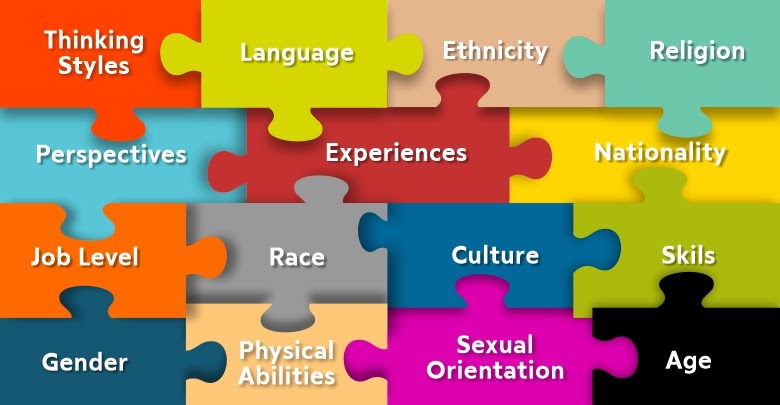Diversity
Dealing with people of various ages, genders, races,
ethnicities, educational backgrounds, places, income, parental status,
religious views, marital status, geographical areas, ancestry, and work
experience can be difficult for HR managers. Managing people with diverse
philosophies, viewpoints, lifestyles, and psychology can be quite dangerous. HR
managers can bind a varied team and retain talent by using effective
communication, adaptation, agility, and a positive mindset
With the rise of globalization, cultural diversity in the
workplace has become more of a trend. One beneficial impact is that employees
from diverse cultures tend to think in different ways, allowing them to study a
problem from a variety of angles. When employees from the same culture are
required to investigate the same issue, this is difficult to achieve
HR experts must sow the seeds of inclusion and affiliation so
that employees feel free to share their opinions. According to research, a
unified work culture increased employee performance by 56 per cent while
lowering the chance of turnover by 50 per cent. Motivate them to take a
comprehensive approach to the company's vision. The
benefits and drawbacks of cultural diversity in the workplace can be both
positive and negative. Disruptive confrontations lost productivity, and the
inability to develop group unity are just a few of the negative consequences. A
robust knowledge foundation built by a diversity of cultural experiences, an
in-house resource of cultural trainers and informers, and a greater proclivity
to grow the firm into foreign cultures are all positive outcomes. The majority
of the time, the impacts of cultural diversity in the workplace are determined
by how well organizational leaders manage it. Top management can improve the
good effects of cultural diversity in the workplace while reducing the negative
effects with proper strategic planning
References
Francina, M., 2018. A Study on Trends and Challenges
in Global HRM. International Journal of Engineering Technology Science and
Research, Volume 5, pp. 356-362.
Martin, G. C., 2014.
The Effects Of CulturalDiversityIn The Workplace. Journal of Diversity
Management, Volume 9.

Organizations today face the challenge of accommodating reasonable adjustments, maximizing and harnessing the potential of all employees, and recognizing and valuing the cultural and linguistic diversity in the workplace. These are all important challenges faced by organizations that employ diverse workforces. Cultural diversity has helped some young ethnic minority groups and women gain promotions to senior jobs, yet has not helped employees. Further, there has been a shift from equal opportunities to diversity management in private sector organisations.
ReplyDeleteChidiac,E. (2018) Strategic Management of Diversity in the Workplace. Newyork : Routledge.
Diversity matters. In an international this is each various and deeply interconnected, agencies and establishments with extra tiers of the range are accomplishing higher performance. Most organizations, which includes McKinsey, have extra paintings to do to take complete benefit of the possibility provided through an extra various management team. Organizations additionally have extra paintings to do on their skills pipeline to attract, develop, mentor, sponsor, and keep the subsequent generations of various leaders in any respect tiers. But with the rewards of the range set to increase, making an investment now could be the fine plan. Winners will pull in addition beforehand and laggards will fall in addition behind (Hunt, 2015).
ReplyDeleteReference
Hunt, V., Layton, D. and Prince, S., 2015. Diversity matters. McKinsey & Company, 1(1), pp.15-29.
Not only the diversification, companies should implement strategies to have Diversity, Equity and Inclusion in their workplace. It is best to align the DEI strategy to company core values so that every body is aware on the same. This strategy can be implemented using 4 steps as per World Economic Forum (2021).
ReplyDelete1. Engage - Create and aligned an committed workforce and leaders
2. Diagnose - Root your strategy in proof, data and analytics
3. Take action - Include DEI in to policies, practices and programs
4. Be Accountable - Set goals, measure progress and share transparently.